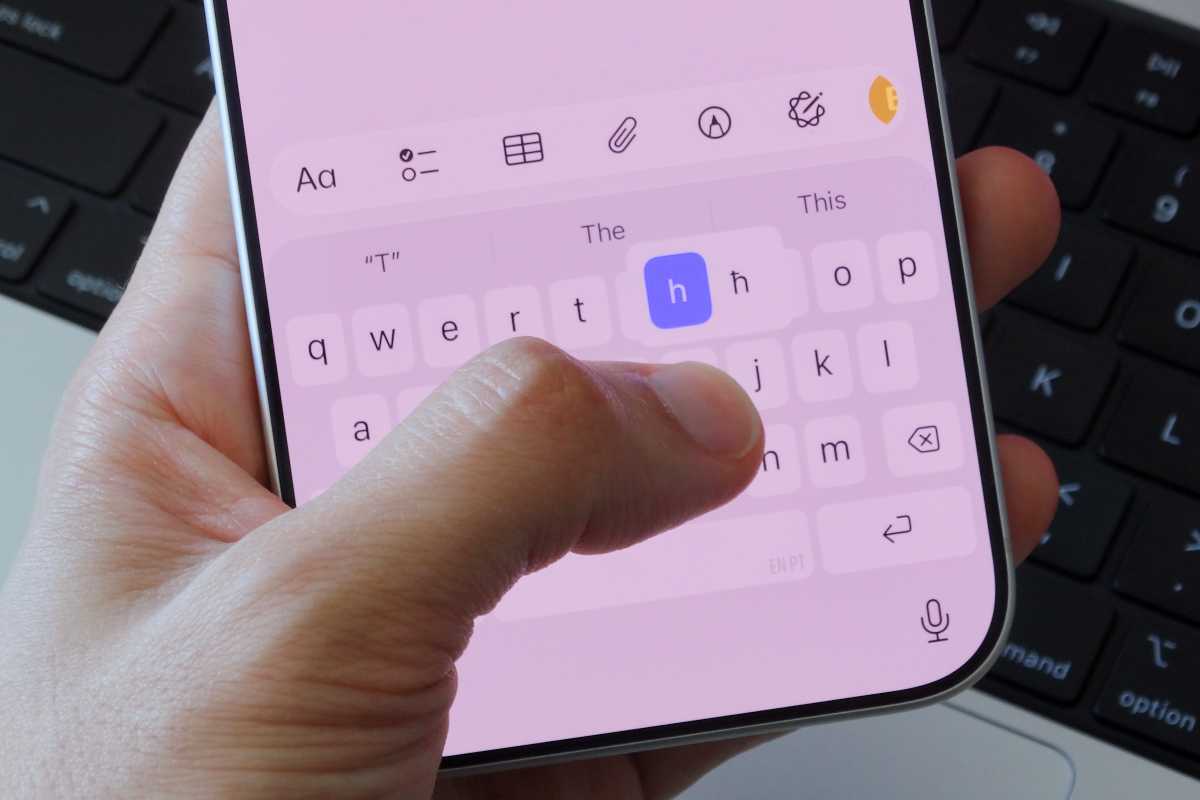Here’s proof that those iPhone typos you keep making aren’t your fault
Description
You may not think much about it, but the virtual keyboard is one of the most essential parts of how the iPhone works. Over the years, Apple has made countless refinements to make typing easier, from auto-correct and predictive suggestions to swipe typing and smarter layouts.
However, since the release of iOS 26 last month, a growing number of users have been complaining that something feels off. If you’ve noticed more typos than usual, you’re not alone. And it turns out there really is a bug affecting the iPhone’s virtual keyboard.
Typing the right letter, but getting the wrong one instead
A YouTuber named Michi NekoMichi recently shared a video compiling complaints about the iPhone keyboard. According to NekoMichi’s video, he is “making more mistakes than usual” when typing in iOS 26.
He’s not alone. In the comments section, multiple iPhone users shared the same frustration, claiming that their devices are inserting the wrong letters even when they’re sure they tapped the correct key.
Some users speculate that the issue might be worse on newer iPhones with thinner bezels, since the keyboard sits closer to the edges of the display. Others believe it’s related to display sensitivity or touchscreen issues. However, given that users of different iPhone models have been reporting the same bug, the problem is likely related to iOS rather than hardware.
<figure class="wp-block-embed is-type-video is-provider-youtube wp-block-embed-youtube wp-embed-aspect-16-9 wp-has-aspect-ratio">
To investigate, Michi recorded a slow-motion video of himself typing the same phrase repeatedly in the Notes app on an iPhone running iOS 26.0.1, the latest public release. The footage shows that the system often replaces one letter with another for no apparent reason. For instance, pressing “U” sometimes results in “J.”
There’s no clear pattern: the same word can produce different errors on separate attempts. “As a fellow longtime iOS user, I’ve noticed this for a couple of years now and have been pulling my hair out trying to figure it out,” one user wrote. Another simply said, “I knew I wasn’t crazy.”
Similar reports have also surfaced on Reddit, X, and Apple’s own discussion forums. Some say it’s most noticeable when typing fast, while others claim it happens even when slowly tapping one letter at a time.
Curious, I tried the same experiment myself. Using my iPhone 17 Pro Max running iOS 26.1 beta 4, I filmed a slow-motion video while typing a few phrases, and the bug showed up immediately. In one test, I repeatedly typed “thumbs up,” and several times the system replaced letters I had correctly tapped. In one case, pressing “H” produced a “U” instead.
The cause remains unclear
At first glance, it’s easy to blame auto-correct, but that doesn’t seem to be the reason. The keyboard registers the correct tap, and yet the output changes afterward, meaning the issue likely occurs after input recognition, not before.
Even disabling auto-correction didn’t make a difference.
 <button class="lightbox-trigger" type="button">
<button class="lightbox-trigger" type="button"><svg fill="none" height="12" viewBox="0 0 12 12" width="12" xmlns="http://www.w3.org/2000/svg">
<path d="M2 0a2 2 0 0 0-2 2v2h1.5V2a.5.5 0 0 1 .5-.5h2V0H2Zm2 10.5H2a.5.5 0 0 1-.5-.5V8H0v2a2 2 0 0 0 2 2h2v-1.5ZM8 12v-1.5h2a.5.5 0 0 0 .5-.5V8H12v2a2 2 0 0 1-2 2H8Zm2-12a2 2 0 0 1 2 2v2h-1.5V2a.5.5 0 0 0-.5-.5H8V0h2Z" fill="#fff"></path>
</svg>
</button><figcaption class="wp-element-caption">
The iPhone keyboard in iOS 26 often registers the wrong keystroke despite tapping the correct key.
</figcaption></figure>Foundry
Apple’s virtual keyboard relies heavily on machine learning to adapt to each user’s typing habits. It constantly learns from your messages and notes to improve suggestions and accuracy. If the bug lies in this adaptive layer, that could explain why the problem appears inconsistently.
It’s also possible that the problem is tied to Apple’s keyboard prediction model, which silently expands touch areas for likely letters. For example, after typing “He,” the system predicts that “L” is the most probable next character and adjusts the keyboard’s touch zones accordingly.
But even this mechanism seems to behave correctly in the slow-motion recordings, suggesting that something else is interfering with how the input is processed. In short, the bug seems to happen after the keyboard accepts the correct keypress, not because of user error or predictive modeling.
No fix in sight, but iOS 26.1 could change that
So far, Apple hasn’t publicly acknowledged this keyboard issue. The only thing affected users can do is file feedback using Apple’s Feedback Assistant (available online or as part of beta versions of iOS).
Apple has a history of quietly fixing minor bugs without acknowledging them publicly in changelogs, so there’s a chance this keyboard issue could be patched silently as well.
The company is currently testing iOS 26.1, which is expected to be released in the coming weeks. While the issue persists in the latest beta, with any luck, Apple will address this glitch before it becomes one of those annoying issues that quietly persist through multiple updates.





